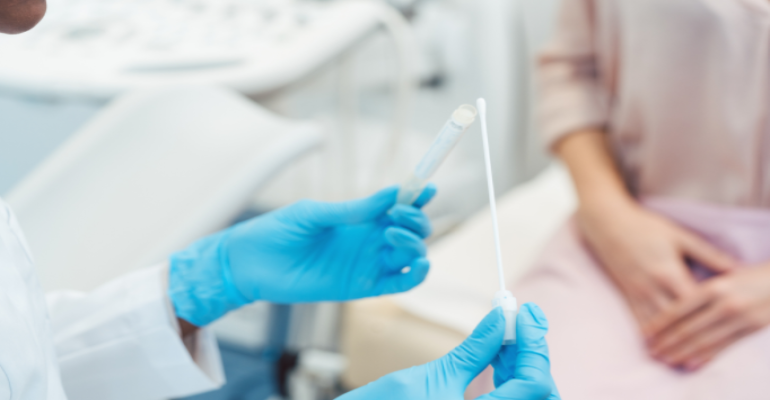
Painless and Pain-Free: Pap Smear Test
Many women have prejudices about the Pap smear test. This gynecological test, which is performed to detect cancer risk and identify cellular abnormalities, is often perceived as a painful and uncomfortable procedure due to hearsay.
What is a Pap smear test?
It is a diagnostic test used to detect cellular irregularities and precancerous cells in the cervix, as well as infections and cervical cancer. The Pap smear also plays a crucial role in the early detection of endometrial cancer and helps identify many diseases in their early stages before they turn into cancer.
This test detects precancerous or cancerous lesions at a stage when they are still treatable. In addition, it is also used to diagnose bacterial, protozoan, fungal, and viral infections (such as HPV).
When should a Pap smear test be done?
- 3 years after the first sexual experience or after the age of 21
- Once a year for women under 30
- For women over 30, three consecutive annual Pap smears
How is the Pap smear test performed?
Contrary to popular belief, the Pap smear test, which many women approach with concern, is not painful but rather a quick and painless procedure. Once the patient is positioned on the examination table, the vaginal canal is opened with a tool called a speculum, and a swab is taken with a brush from the area known as the transformation zone of the cervix.
The swabbing process takes about 5 to 10 seconds. A pathologist examines the cells under a microscope to detect lesions that may be cancerous or precancerous. The entire procedure takes approximately 30 seconds.
What should be considered before a Pap smear test?
It is recommended to perform the test after the menstrual period ends. There should be no sexual intercourse approximately 48 hours before the procedure. To ensure a healthy sample, the vagina should not be cleaned, and no creams or similar medications should be used beforehand. If there is a vaginal infection or lesion, it should be treated first before performing the test.
How are the results of a Pap smear test evaluated?
If the Pap smear result is negative, this means that no abnormal, precancerous, or cancerous cells were detected. If the result is positive, then abnormalities were found in the cervical cells in the sample. In such cases, treatment for infection and close follow-up are recommended. A colposcopy or biopsy may also be performed depending on the situation.
Does a positive result indicate cancer?
A positive result does not mean the person has cancer. At this point, one should consult a physician to receive information about the result and undergo further testing. A colposcopy can be performed for a detailed examination of the cervix. Another advanced screening method is identifying the type of HPV, as certain types of HPV carry a higher risk of developing cancer.
If you meet the above criteria, you should undergo regular Pap smear tests and consult a specialist gynecologist.

